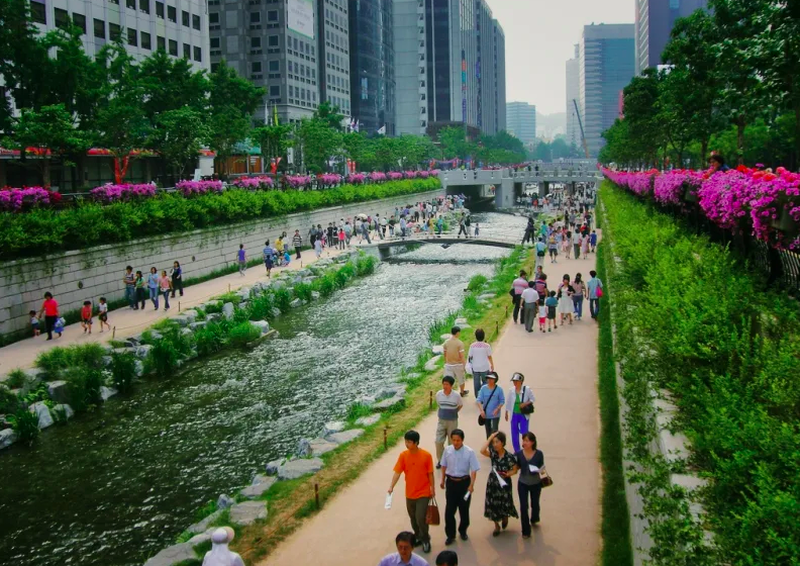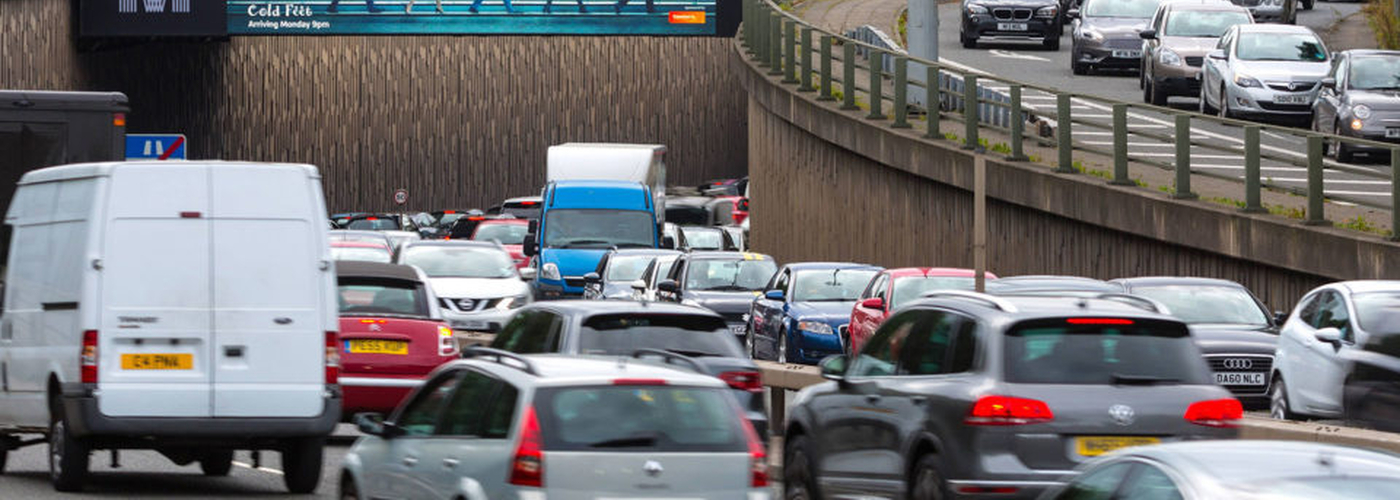The inner ring road is cutting into the neck of our city. Let’s tear it off, and let Manchester breathe again.
In the 1960s, in the wake of the slum clearances, Manchester embarked on a massive road-building project on the new ground cleared in its urban centre.
Marred by ructions with the national government, a vicious territorialism between the different power blocks in the town hall and spiralling costs, the inner ring road was eventually completed on May 5th 1967, eighteen years after it had first been planned. It was opened by the then Prime Minister, Harold Wilson. One week later, Labour would lose control of Manchester to the Conservatives for the first and only time since the war.
From Seoul to San Francisco, this has been done, and has breathed new life into cities.
It would be rather harsh to blame that event on the road itself, but the structure has always been somewhat controversial, not least because of the price-tag. In total it cost £9m in 1967, the equivalent of around £160m today. Its construction had two key aims.
The first, to ease transportation between the heavy industries to Manchester’s east; Openshaw Works, Gorton Tank, Bradford Colliery, English Steel and others, and the Salford Docks. The second, to facilitate the commute of an increasingly car-centric workforce from the overspill estates they had been sent to, to a city centre now exclusively meant as a commercial zone.
Implicit in this was the attempt to ensure there could be no encroachment of housing estates back towards the city centre, what the Guardian’s Joseph Minogue at the time called, “the tight gripping collar of unplanned, unimaginative buildings”.

Whatever the rights and wrongs of that decision half a century ago, this is a structure built for a different age. The industries and docks it served no longer exist, replaced with The Etihad and Media City. More importantly perhaps, the post-war plan for the centre of Manchester had no one living in it. Now there are tens of thousands with more moving in every year to fill the ever-reaching tower blocks, and the staggering traffic levels on the inner ring-road mean those people are breathing air that is killing them.
The air quality is bad enough for people who work or visit the city centre, but for those who live their whole lives here it’s a major health threat, to which the only recourse can be a reduction in the number of vehicles.
Yet even if the inner ring road were not redundant in its purpose and actively detrimental to public health, it would still be worth dismantling, because of what a tremendous opportunity that would present for the city. The land the road and its attendant slip roads cover itself is vast, and would be a worthy prize.

But more importantly, the current effect of that barrier can be seen on a map, as it builds a wall around the city core. In the West, it is Trinity Way, not the Irwell, that marks the clearer boundary. To navigate to Ardwick on foot requires a series of unfriendly road crossings or a dive underground. Part of the strange sense of separateness in New Islington comes from this caesura from the city centre proper. And psychologically, this self-imposed ‘Manhattan effect’ has contributed to the perception, by planners, developers and citizens, of a core being created that is somehow apart from the rest of our city.
The attempt to get a quart of development into a pint pot is what leads to absurdities like the proposed towers in Hulme, where the city centre briefly overflowed and attempted to put a skyscraper amongst houses it clearly dwarfed. That approach is not sustainable, let alone desirable.

Instead, we could break down that barrier. Princess Street could have an actual park not a concrete maze. We could connect the established communities around Ardwick Green with those moving to the new neighbourhood of Mayfield, to the benefit of all. We would remove the great grey cut of Great Ancoats Street across the Ashton Canal, at a moment when the closure of the Ancoats Retail Park means there is a big enough piece of land to craft a proper piece of public realm, accessible to all. From Seoul to San Francisco, this has been done, and has breathed new life into cities.
Perhaps most ambitious of all, we could make the Mancunian Way flyover itself a symbol of this transformation. Like the famous Highline in New York, crafted out of a derelict railway, the elevated road itself could be the basis of the green oasis so many in the city have asked for. Those coming in to our city would not be greeted by a barely-moving traffic jam above their heads, but the real garden of the people of Manchester.
These plans are not without cost, and rely upon a fundamentally better public transport system, genuine engagement and the confidence for long-term investment. But the key question of reshaping our city is always about whether the city council have the will to do it, just as they did in 1967, and whether there are people who will argue the case.
Today the inner ring road is a starched, mid-century collar, cutting into the neck of our city. Let’s tear it off, and let Manchester breathe again.
Sam Wheeler is a Manchester native and a Labour councillor for the Piccadilly ward. His other articles for Confidential include:
Why fining Manchester's beggars is not the answer
I am the Resurrection: Manchester's population revival
I spent 7 hours in Piccadilly Gardens with the Police
Main image credit: Ocean Outdoor











